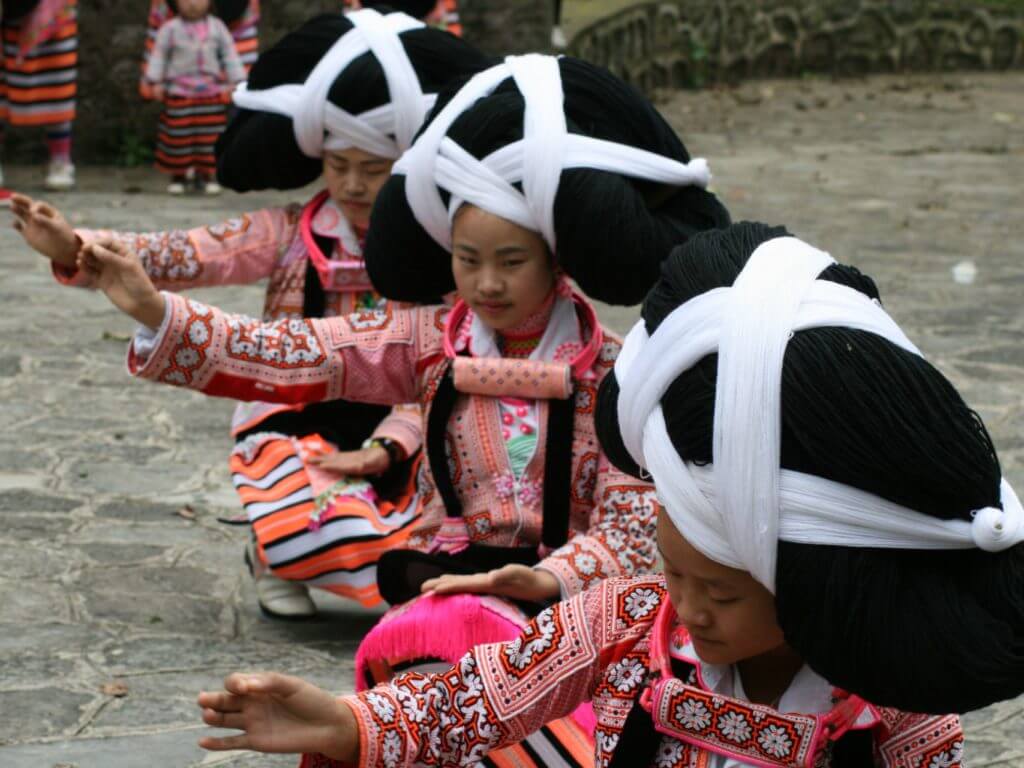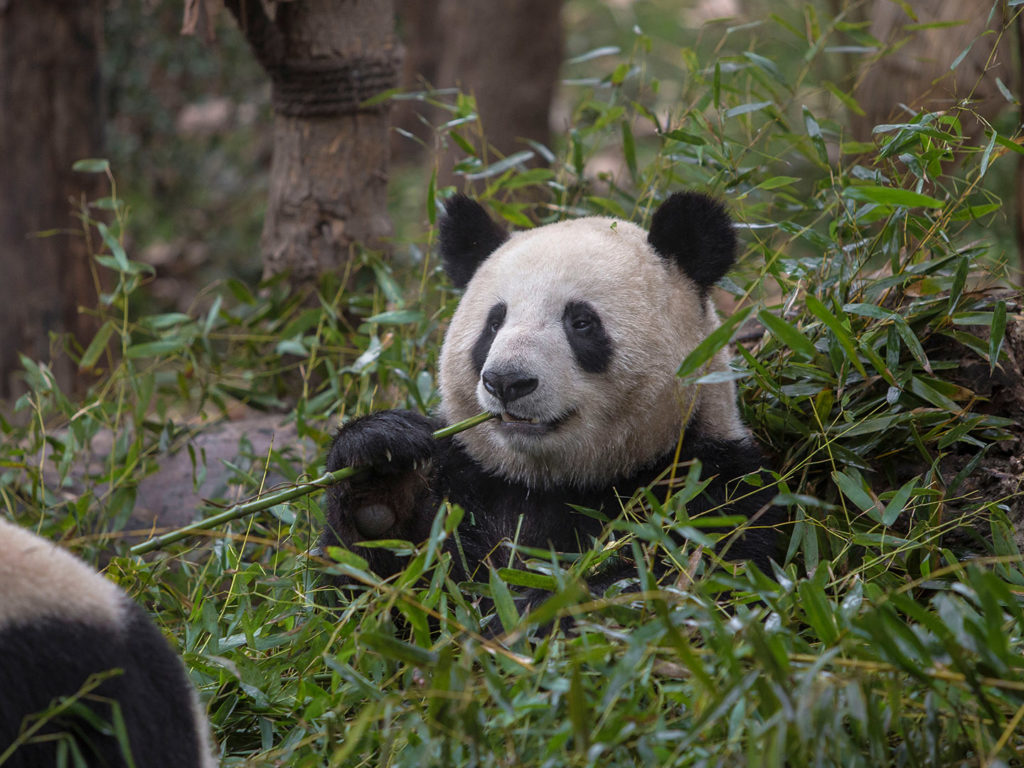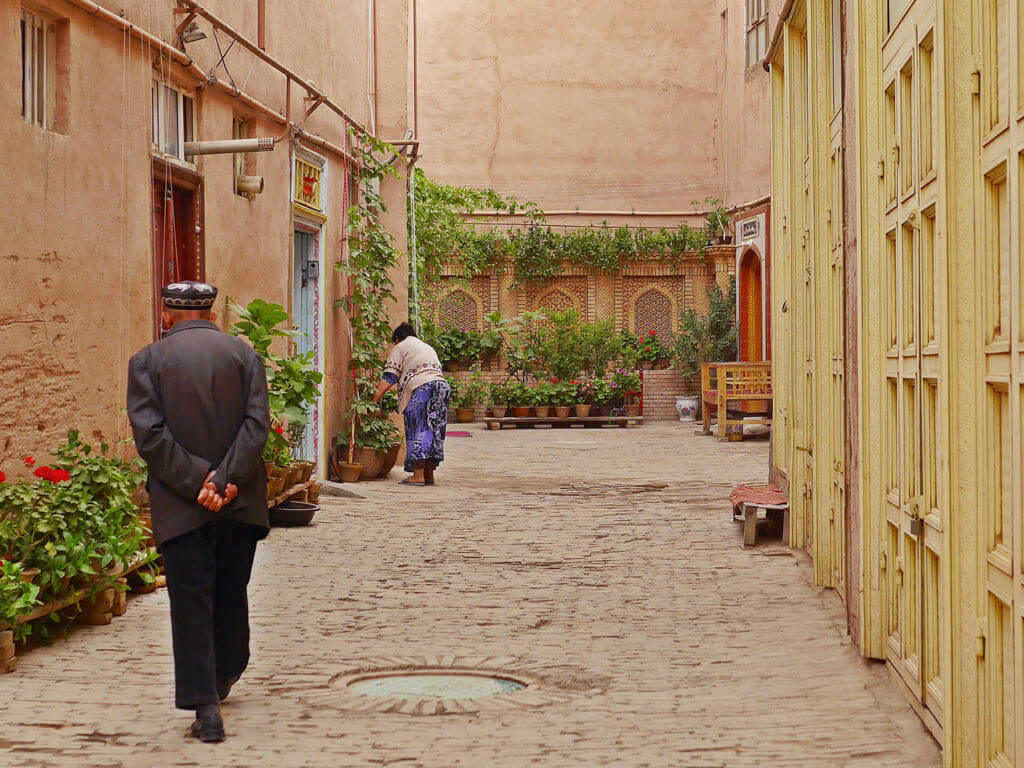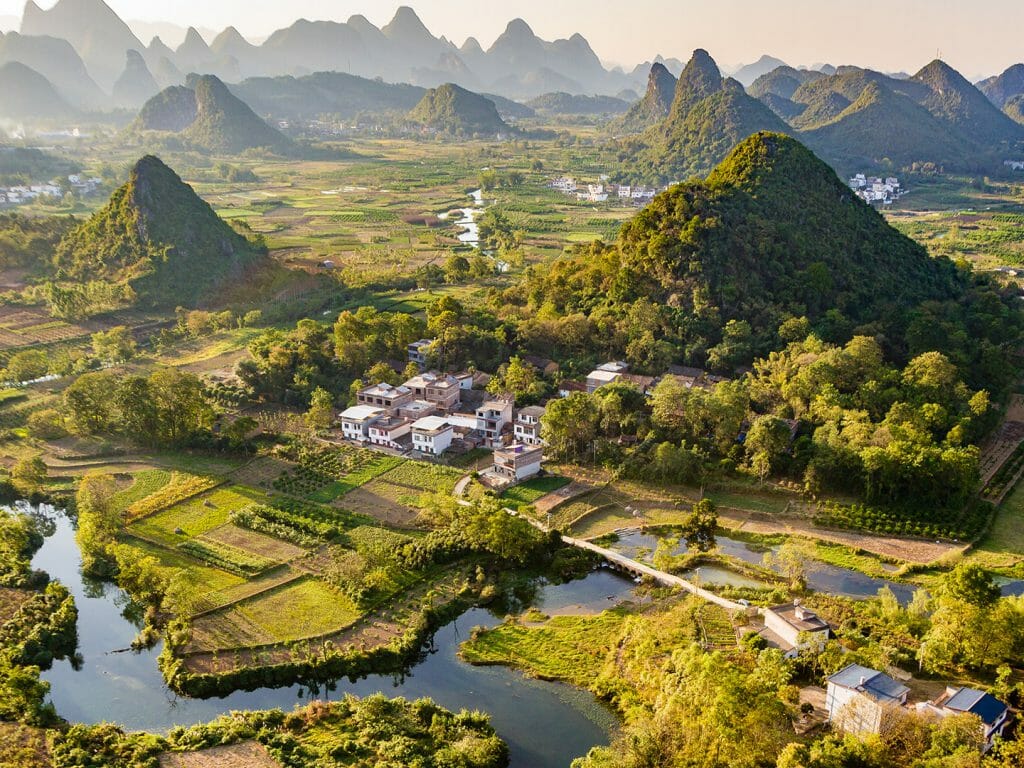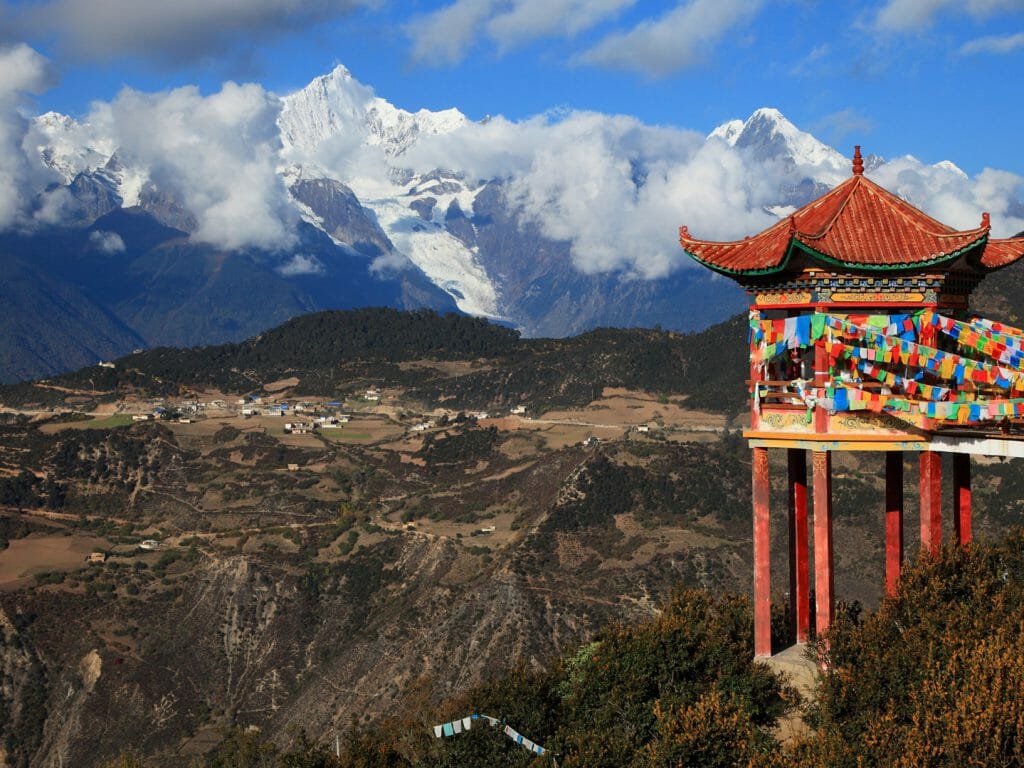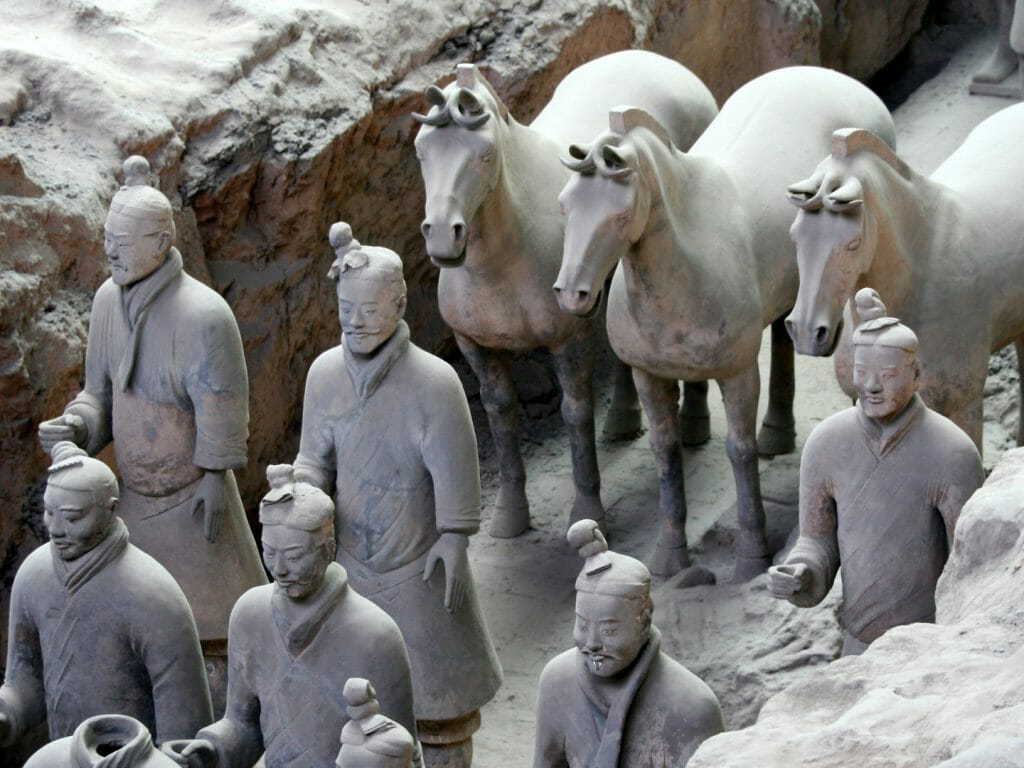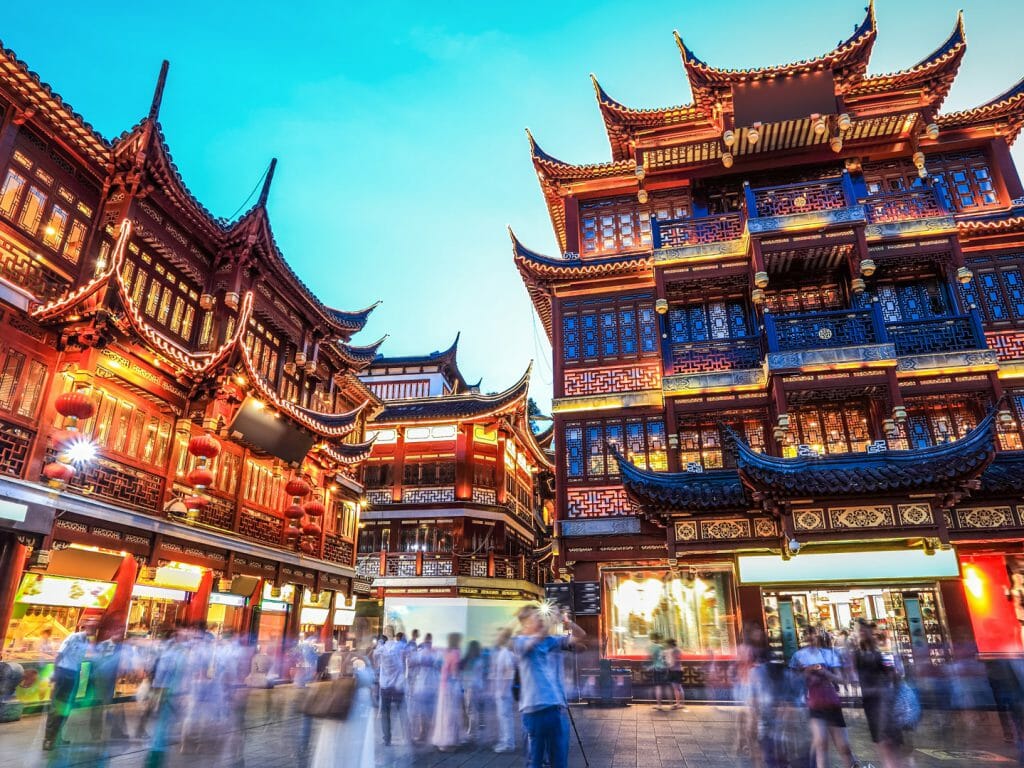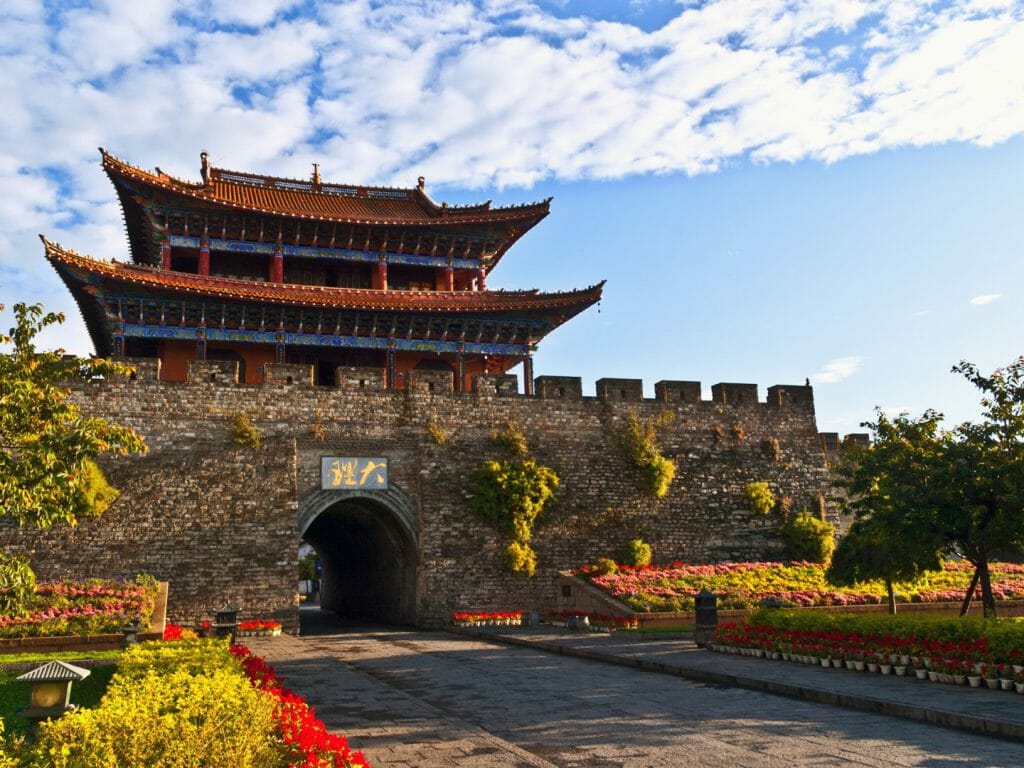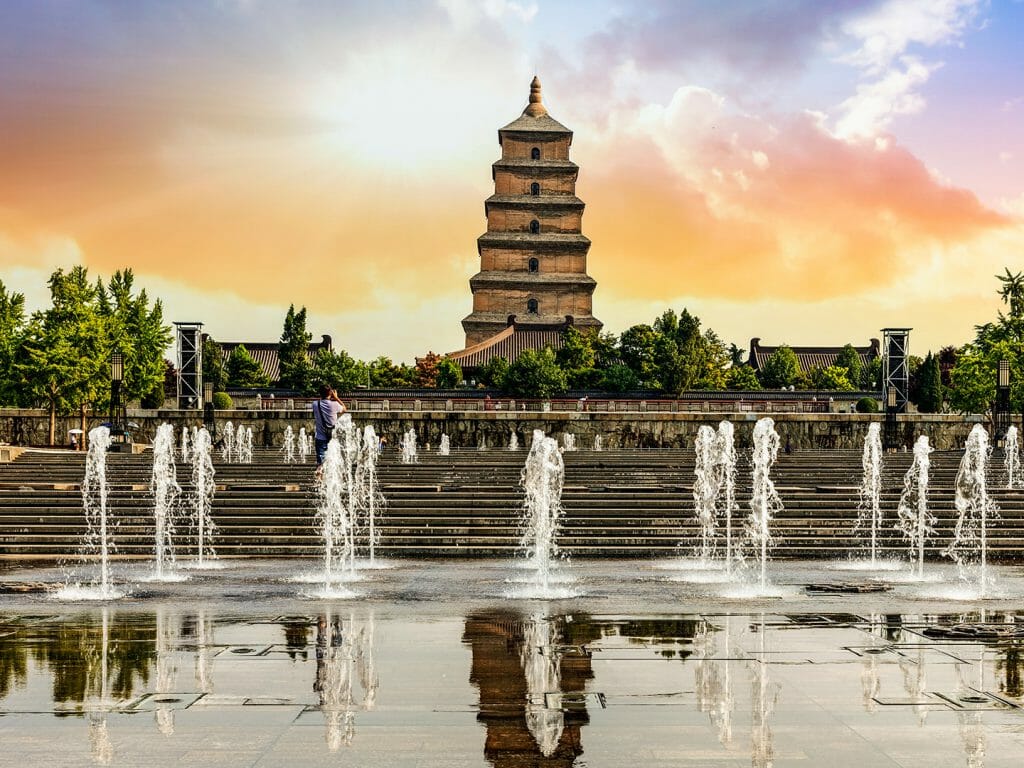I have been travelling to China since the early 1980s when I was a backpacker, and, on this occasion, I accompanied our textile and cultural group tour to Gansu and Qinghai Provinces in central China. Our China group tour leader Gina Corrigan is an expert on Miao and Tibetan costumes; her collections can be found at the World Museum in Liverpool and the British Museum in London.
Getting away from the crowds in China is difficult. So, it was wonderful to be in the open countryside amongst the Tibetan people, yaks and wildflowers and seeing some of the most important Buddhist sites outside Tibet. It is a fact that if it takes too long to get somewhere most Han Chinese will not go. This was the delight of this region.
A highlight of this group tour to China was a Shaman festival, which we attended over two days. This usually moves from village to village with Shamans or spirit mediums from other villages making a guest appearance. The festival offered a different perspective to the Buddhism usually found all over this region. I only saw three crimson-robed Buddhist monks, looking inquisitively from the back of the temple compound. As in many religions, there is often no “pure” form but rather a hazier inclusion of different religions. Buddhism and Shintoism in Japan, Orthodox and Shamanism in Russia, Buddhism and Animism in Myanmar for example.
Both days of the festival were mesmerising. From early morning until evening the activity never stopped. The Shamans made appearances from time to time, coming down the temple steps into the courtyard. Always accompanied by “helpers” they frothed at the mouth, their long hair trailing down their backs as they opened bottles of high percentage alcohol and threw it around entranced. They did the same with handfuls of barley taken from wooden bowls. One climbed the steps to a parapet above the temple entrance doorway and poured alcohol and yoghurt and put pine branches on to a fire, burning in a large metal fire bowl, sending plumes of smoke swirling skywards.
There was a comedy sketch that made the locals laugh and from time to time other dances, singers, stilt walkers, men in
I visited Amchok the day after the festival when local people were listening intently to the sermons and praying devoutly. This second “immersion” was very special and almost completely devoid of tourists.
Seeing and doing things differently is what we strive for. Talking to our clients assists with our planning of both tailor-made and small group tours. This region is accessible although seen as being remote. Few really venture here but those who do will be rewarded.
Join Gina on a similar small group tour to China in October 2019 to see the Miao villages and the different sub-groups within this ethnic group.


